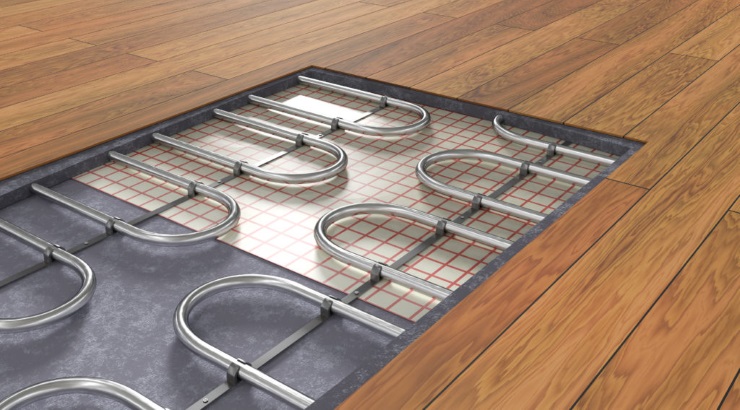Features
Radiant Floor Heating Systems
Old-style mode of heating is making a comeback.

Once a popular method of heating, radiant floor heating is making a huge comeback as homeowners begin to install radiant heating panels in their homes.
What is Radiant Floor Heating?
Dating back to primeval times, in-floor radiant heating was common in Rome where Romans would dig a tunnel under the floor and fill the burrow with hot stones to warm a room.
As the waves of thermal radiation rise from the burrow, they warm up the objects above them – which discharge the captured radiant floor heat thereby heating the room.
Thanks to technology, this mode of heating has evolved into something more efficient.
Known as in-floor radiant heating, the technique involves the transfer of heat from a heat source to a target object using electromagnetic waves rather than by conduction or convention.
Anyone warming up to the idea of radiant heating floor should study the various types of radiant floor heating systems to identify what works best for them.
Here are three types of radiant heating systems:
1. Electric Radiant Heating System
Electric radiant heated floors are fitted with electric coils that generate heat when electricity passes through them. The coils produce heat when power is switched on since they are made of metals with high electrical resistance.
Ordinarily, the coils are usually covered in sheets of polymer – which, being good conductors of heat, pass on heat to the floor.
A major advantage of electric radiant heating systems is their low maintenance and high longevity. However, these systems have huge running expenses due to the high costs of electricity in many parts of the world.
Electric radiant heating can be quite cost-effective for small houses or if the floor’s thermal mass is big enough to store heat that is sufficient to keep the house warm for up to 10 hours without additional heating.
2. Hydronic Radiant Heating System
These are the most popular types of radiant heating systems for regions that experience winters. Hydronic radiant heating systems work by pumping heated water from a central boiler through a network of pipes under the floor.
RELATED: 7 Popular Types of Smart Building Technology
These systems are cheaper to run compared to electric radiant heating systems since homeowners have a wide choice of fuels to heat the water.
However, if something malfunctions, it can be complicated and very expensive to repair hydronic radiant heating systems.
3. Air Radiant Heating System
These systems use heated air to warm a floor. Since air is incapable of holding and retaining large amounts of heat, this method of radiant heating is the least efficient.
With this method of heating, the room warms quickly but it loses the heat equally fast – creating an uncomfortable warm-cold heating pattern. Air-heated radiant heating is rarely installed in residential houses.
Radiant Heating Floor Cost
It costs more to install a radiant heating system compared to other types of heating mechanisms.
Depending on the installation method or whether you are starting from scratch or retrofitting, you can expect to spend $6 to $15 per square foot.
However, despite the high installation price tag, a radiant heating system can save you more than 30% of your energy costs compared to forced-air heating once it is up and running.














